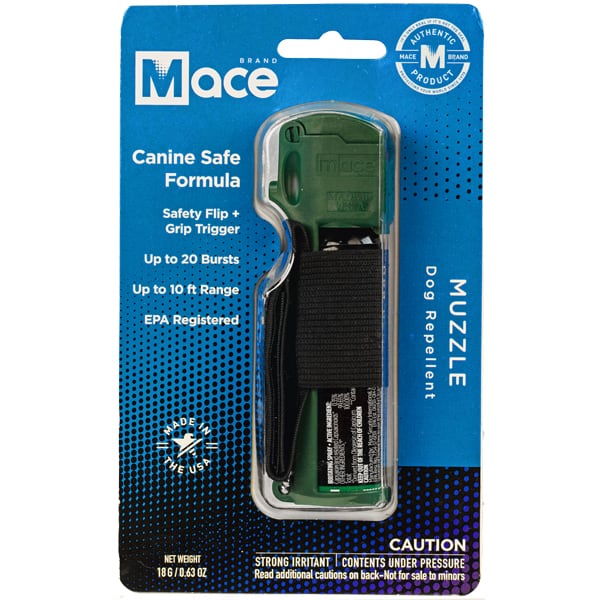What are the pros and cons of humane animal repellents? Well, they help you keep unwanted critters away without harming them. By using natural ingredients like essential oils. They’re safe for your family and pets. And better for the environment than chemical options. However, they may need frequent reapplication, especially in bad weather, and could cost more long-term due to this. Each situation varies, so consider the severity of your pest issue to choose the best approach. Explore further to understand how these solutions can work for you.
Key Takeaways
- Humane repellents use natural ingredients, reducing environmental impact and health risks.
- Regular reapplication is necessary, increasing time and potential cost.
- Safer for pets and local wildlife, supporting biodiversity preservation.
- Effectiveness may vary with weather conditions and animal adaptability.
- Eco-friendly but may require higher initial investment compared to traditional repellents.
Understanding Humane Animal Repellents: Overview and Types

Humane animal repellents offer a kind and effective way to discourage unwelcome critters from invading your space without harming them.
These solutions leverage natural scents or tastes that animals find unpleasant, ensuring you’re not hurting the animals while keeping your area free from intrusion. Among the types of animal repellents, you’ll find liquid forms that can be sprayed directly onto surfaces and granular types that are sprinkled to create protective barriers.
These methods are particularly helpful in deterring animals like squirrels, using popular ingredients like cinnamon and peppermint oil.
Although they require regular application, these repellents provide a non-lethal alternative, ensuring both safety for wildlife and peace of mind for you.
Pictured above is the Mace Muzzle Humane Dog Repellent currently on sale at Nittany Self Defense.
Here’s an informative video about using a dog repellent spray
Evaluating the Effectiveness of Natural Ingredients in Repellents
Why consider natural ingredients in your animal repellent strategy?
Natural ingredients like capsaicin oil, putrescent egg, and essential oils such as peppermint and citronella effectively repel animals by masking scents and deterring through taste and smell.
Studies have shown that ingredients like lemon eucalyptus oil are recognized by the EPA for their efficacy, suggesting that natural components can be powerful in animal repellents.
You can tailor homemade repellents with these ingredients to target specific animals, offering a customized solution without harmful chemicals.
However, their effectiveness may require more frequent application since natural ingredients often wash away quickly in adverse weather.
You’ll need to experiment with concentrations and formulations to find what works best in your environment.
Health and Environmental Benefits of Humane Repellents
You’re making a smart choice by choosing humane repellents; they’re not only safer for your family and pets, but they also protect local wildlife without the harsh effects of chemicals.
These repellents use eco-friendly ingredients, reducing your environmental footprint and promoting a healthier ecosystem.
Plus, they’re free from allergens, making them a safe option for everyone in your home.
Reduced Toxicity Risk
While it’s important to keep unwanted critters at bay, choosing products that safeguard your health and the environment is equally essential. Humane repellents offer reduced toxicity by relying on non-toxic ingredients. You’ll find these safer options liberating, especially if you’ve got kids or pets wandering around your backyard.
| Benefit | Description |
|---|---|
| Lower Health Risks | Non-toxic ingredients mean fewer health worries for you and your loved ones. |
| Environmental Preservation | Avoids polluting waterways and harming wildlife. |
| Safety for Sensitive Individuals | Less likely to trigger allergies or skin irritations. |
| Support for Sustainable Practices | Contributes to ecosystem and biodiversity preservation. |
Opting for these humane solutions not only keeps your space pest-free but also supports a healthier planet.
Eco-Friendly Ingredients
As you explore humane ways to repel unwanted animals, consider products crafted with eco-friendly ingredients.
These natural extracts, like capsaicin and peppermint oil, not only deter pests effectively but also safeguard your health and the environment. Unlike synthetic chemicals that can seep into waterways, these plant-based options are biodegradable and have a minimal ecological footprint.
You’ll be using repellents that are as potent as their chemical counterparts, with some even recommended by the EPA. By choosing humane repellents, you’re not just protecting your space; you’re also contributing to wildlife preservation and sustainable practices.
It’s a proactive step towards nurturing a healthier ecosystem around your home.
Allergen-Free Formulations
If you’re concerned about the health implications of traditional pest control methods, consider switching to allergen-free formulations in your humane animal repellents.
These products, often made from natural ingredients like essential oils, are gentler on your skin and safer around children and pets. You’ll reduce the risk of allergic reactions and avoid harsh chemicals like DEET that can cause irritation.
Moreover, allergen-free formulations contribute to environmental sustainability. They minimize harmful chemical runoff and protect local ecosystems from pollutants.
Being biodegradable, these eco-friendly repellents don’t leave a lasting impact on the environment. Additionally, they effectively manage pests without harming non-target wildlife, supporting a healthier, more balanced ecosystem.
Challenges With Durability and Frequency of Application
Despite their benefits, humane animal repellents face challenges related to durability and the frequency with which they must be applied.
You’ll find that these repellents often require frequent reapplication. Whether it’s due to rain, wind, or simply the passage of time, their effectiveness can quickly diminish. This necessity can mean daily or multiple applications to guarantee consistent results.
Furthermore, while some products promise protection for up to 90 days, actual durability often varies considerably depending on weather conditions and the specific repellent used. This inconsistency can make it challenging for you to maintain an effective deterrent schedule without it becoming time-consuming.
While some repellents claim up to 90-day protection, actual effectiveness varies greatly with weather and product type.
Additionally, animals might adapt to certain repellents, forcing you to switch products often to stay effective.
Cost Comparison: Humane vs. Traditional Animal Repellents
When you’re weighing the costs between humane and traditional animal repellents, both options might seem similar at first glance, with prices ranging from $10 to $30 per unit.
However, you’ll find that humane repellents, although initially comparable in price, may require more frequent reapplications. This can add up, making them pricier in the long run compared to traditional chemical repellents which often promise longer-lasting effects.
Additionally, the potential health risks linked with chemical repellents could lead to unforeseen medical expenses, particularly if pets or children suffer adverse reactions.
Furthermore, while eco-friendly ingredients in humane solutions might cost more upfront, they support environmental sustainability, possibly averting future ecological expenses.
The Role of Placement and Environment in Repellent Efficacy
Understanding the costs associated with different types of animal repellents sets the stage for a deeper look into how you can maximize their effectiveness.
The placement of repellents is essential; strategically positioning them near animal entry points or active areas enhances their deterrent power.
However, the environment plays a significant role too. Wind and rainfall can reduce the efficacy of liquid repellents, necessitating more frequent applications.
Additionally, granular repellents may prove more useful in winter conditions, as liquids are prone to wash away.
Be mindful of competing scents in your environment, as they can interfere with aromatic repellents. For instance, if you’re using peppermint oil to deter squirrels, make sure it doesn’t inadvertently repel pets or desired wildlife.
Impact on Non-Target Wildlife and Ecosystems
While humane animal repellents are designed to deter pests without harm, it’s important to contemplate their broader environmental impact.
Here’s how they influence non-target wildlife and ecosystems:
- Lower Risk to Non-Target Wildlife: Humane repellents, typically natural, pose less threat to unintended wildlife, thereby helping to maintain biodiversity.
- Selective Deterrence: Ingredients like essential oils specifically target nuisance animals without harming beneficial species in the same habitat.
- Reduced Environmental Impact: These repellents generally minimize harmful runoff, protecting local waterways and ecosystems.
- Potential Unintended Effects: Some natural ingredients might inadvertently repel non-target species, potentially disrupting local wildlife populations.
Understanding these impacts helps you make informed choices about using humane repellents responsibly.
DIY Solutions: Making Your Own Humane Repellents
Creating your own humane repellents offers a practical and environmentally friendly solution to managing nuisance animals. You can craft DIY humane repellents using natural ingredients like putrescent egg solids, capsaicin oil, and ground cayenne. These substances are eco-friendly, ensuring you’re not harming the environment or non-target wildlife.
Experiment with homemade repellents by mixing water with essential oils such as peppermint, rosemary, or garlic, which deter pests with their potent scents.
Utilize everyday items like vinegar, coffee grounds, or dryer sheets for an economical approach. Remember, you’ll need to reapply your DIY solutions regularly, especially after wet weather, to keep those unwanted visitors at bay effectively.
Tailoring mixtures to your local animal challenges can enhance the repellents’ efficacy.
Professional Services vs. At-Home Remedies: What’s Best for You?
When you’re weighing professional services against at-home remedies for animal control, it’s essential to take into account both cost efficiency and efficacy.
Professional services might seem pricier upfront, but they often provide more definitive and long-lasting solutions to your pest problems.
On the other hand, DIY methods can be less expensive and good for quick fixes, though they may require more frequent application to maintain their effectiveness.
Cost Efficiency Analysis
If you’re grappling with the decision between hiring professional wildlife removal services and trying out at-home remedies, it’s essential to take into account both the costs and the effectiveness of each option.
Here’s a quick cost efficiency analysis to help you decide:
- Initial Costs: Professional services might cost $100-$500 upfront. At-home remedies are cheaper, often under $50.
- Long-Term Costs: Professionals often include follow-ups, avoiding continual expenses. At-home solutions may need multiple applications.
- Time and Effort: Professionals save you time spent on research and trial and error.
- Consistency: Professional services guarantee results and humane treatment, while DIY methods can yield unpredictable outcomes and may require tweaking.
Choose what best suits your needs and values.
Efficacy Comparison
How do you choose between professional wildlife removal services and at-home remedies? Professional services offer targeted solutions and expertise, ensuring effective and safe removal. They’re ideal if you’re dealing with persistent infestations or require an extensive approach. In contrast, DIY repellents can be cost-effective for minor issues but may lack long-term efficacy, often needing frequent reapplications.
| Aspect | Professional Services | DIY Remedies |
|---|---|---|
| Effectiveness | High, with tailored tools | Variable, depends on usage |
| Cost | Higher initial investment | Lower, but may recur |
| Long-term Solution | Generally permanent | Often temporary |
You’ll want to weigh these factors based on your specific situation and the severity of the wildlife issue.
Future Trends and Innovations in Humane Animal Repellent Technology
As we look to the future, the landscape of humane animal repellent technology is rapidly evolving, driven by innovation and a deeper understanding of animal welfare.
Here’s what you’ll likely see:
- Ultrasonic Devices: Utilizing non-invasive sound waves, these devices deter animals without harm, reflecting a shift towards more ethical solutions.
- Plant-based Repellents: Innovations aim to boost the efficacy of natural ingredients like essential oils for more durable animal control.
- Eco-friendly Formulations: Expect biodegradable repellents that align with sustainability goals, minimizing environmental impact.
- Smart Technology Integration: Future repellents will likely feature remote control and monitoring via apps, enhancing user convenience and effectiveness.
You’re entering an era where technology meets compassion, ensuring safety for animals and your space.
Frequently Asked Questions
Do Animal Repellents Really Work?
You’ll find animal repellents’ effectiveness varies. Natural deterrents and application techniques differ, and while generally safe for the environment, their reliability can disappoint, necessitating frequent reapplication to maintain some degree of deterrence.
Does Repels All Animal Repellent Work on Dogs?
Wondering if Repels All works on dogs? It varies; some dogs might ignore its scent despite its safe, natural oils. Always consider repellent safety and explore training alternatives to influence dog behavior effectively.
What Scent Will Keep Animals Away?
You’ll find that scent sources like cinnamon, garlic, and peppermint oil serve as natural deterrents, effectively keeping animals away. Adding coffee grounds or using ultrasonic devices can enhance these fragrances’ repellent properties.
How Does Animal Repellent Spray Work?
Animal repellent sprays use natural ingredients like capsaicin, deterring pests by taste or smell. You’ll apply these sprays around areas you want protected; they’re safe for use near pets and plants, needing frequent reapplication.
Conclusion
As you weigh the scales between traditional and humane repellents, imagine your backyard thriving without harming its guests. Humane repellents blend safety with respect for nature, though they may require more frequent application and possibly higher initial costs. By choosing or creating these eco-friendly solutions, you’re not just protecting your garden, but championing a healthier ecosystem. So, whether you DIY or go pro, you’re making a choice that benefits both your peace of mind and the planet.



